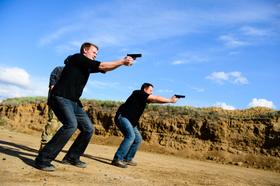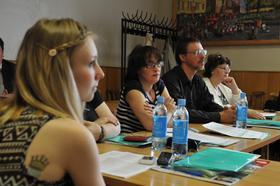In March, President Obama called community colleges, universities and theology schools to come together despite their diverse faiths to make their communities a better place. Since the initial call went out from the White House, more than 240 schools have answered the challenge – a much larger number than the administration originally planned for. This movement has a twofold purpose: first, to cross religious lines and promote religious tolerance for college students across the country. The second purpose is to work together as a community to help those in need and protect the environment. With a growing population of postsecondary institutions jumping on the Interfaith and Community Service Campus Challenge, it appears that the White House might get its wish on both counts.
This video reports on the White House meeting of the President's Interfaith Community Service Campus Challenge on August 3, 2011.
What is the Interfaith and Community Service Campus Challenge?
According to a report at WhiteHouse.gov, the Interfaith and Community Service Campus Challenge serves the ultimate goal of President Obama to emphasize faith and community involvement as a means of building understanding between diverse communities and contributing to the common good. As the President said in his address when he announced this challenge, “For over 200 years, Americans of all faiths have come together, put their shoulders to the wheel of history, and made this country what it is today. And I know that as we go forward, it’s going to take all of us – Christian and Jew, Hindu and Muslim, believer and non-believer – to meet the challenges of the 21st century.”
President Obama chose colleges as the venue for his challenges because postsecondary campuses nationwide have traditionally been at the forefront of solving many of the country’s problems. This demographic also deals intensely with a diverse population, enabling the campus environment to promote understanding and tolerance across gender, racial, and religious lines. The President believes that interfaith service can profoundly impact many of the issues facing communities today, including homelessness and caring for the environment. At the same time, bringing various religions together builds upon civility among communities for those who do not look, speak, or think like the majority.
Widespread Representation
After the call was put out a few months ago, hundreds of colleges nationwide answered the challenge. Joshua DuBois, executive director for the White House Office of Faith-Based and Neighborhood Partnerships, told the Associated Baptist Press, “This is truly a historic occasion. Never before in our nation's history have colleges, universities, community colleges, and theology schools come together around the goal of interfaith cooperation for service around the nation.”
The White House was unsure what to expect when they first issued the challenge, but they determined that if 100 schools answered the call, they would deem the effort a success. With 240 interfaith proposals submitted to date, the administration is slightly pleased with their response. Proposals have covered community service of all kinds, from reducing human trafficking to protecting the environment. Other projects listed in the Associated Baptist Press article include feeding the hungry, assisting military families, and providing disaster relief.
This video offers an in-depth review of the President's Interfaith and Community Service Campus Challenge national convening conference at Georgetown on September 23-24, 2013.
In Rochester, New York, a number of institutions of higher education are planning to participate in the challenge. According to an article in the Democrat and Chronicle, some of the colleges included in the kickoff of the challenge include State University College at Genesco, the College at Brockport, and Monroe Community College. The leaders at these schools are interested in coming together to determine what other institutions plan for their community service.
This video offers an overview of Monroe Community College.
“I think this gives a national perspective on what other universities are up to,” Tom Matthews, director of leadership education, development, and training at Genesco, told the Democrat and Chronicle. “We may pick up some ideas – and incorporate them into our planning.”
The Impact of the Challenge
When the initial challenge was announced, Inside Higher Ed provided an analysis of the type of impact that might be expected on college campuses nationwide. Some of their predictions include:
- More college leaders may begin talking to one another about the importance of interfaith cooperation, which may result in the advancement of this work as an institutional priority
- As the diversity movement broadens, talk may move into the college classroom, engaging students and professors on an academic level
- Courses may be introduced to foster positive encounters between students of different faiths and non-believers to promote greater interfaith cooperation
- ·Religious diversity will become work that encompasses a greater portion of the college campus, engaging additional staff and a larger group of students
- Students will use their college campuses to demonstrate the power of interfaith cooperation, which may then move into the communities surrounding the college campuses
- Measurable changes may occur on a national level as more college students who have had this background graduate and begin to take on leadership roles in their communities
While there is no certain way to know if this impact will be seen from a single movement, the large response to the initial challenge demonstrates that the potential is alive. There is also evidence that knowledge about diversity in other areas, like race and gender, has resulted in positive changes throughout the country. In the meantime, this challenge by the Obama administration has successfully brought schools across the country together to bridge gaps in faith and work together for the good of the communities around them.
Questions? Contact us on Facebook. @communitycollegereview















